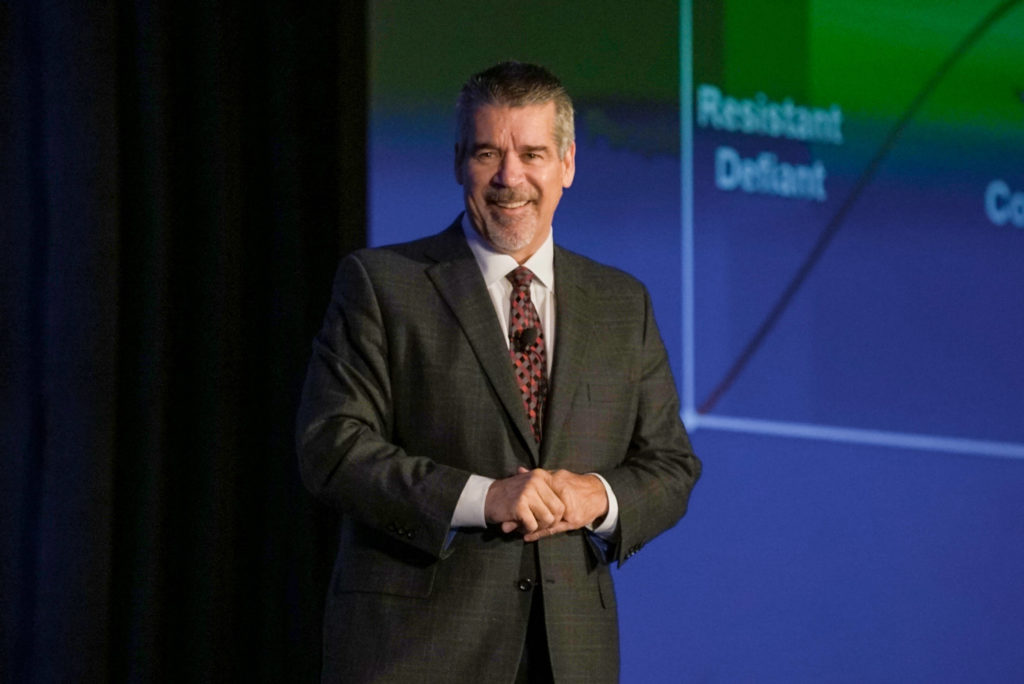Ephesians 4:15-16
“Speaking the truth in love, we are to grow up in every way into him who is the head, into Christ, from whom the whole body, joined and held together by every joint with which it is equipped, when each part is working properly, makes the body grow so that it builds itself up in love.”
An effective strategy for the local church focuses on four critical elements: connect, worship, grow, and serve. Everything a church does should focus on executing this four-dimensional strategy in a systematic, disciplined way.
Grow
The third element of strategy for the church is to facilitate the spiritual growth of the believers in the fellowship. Jesus’ directive in Matthew 28 to make disciples is well-known. Unfortunately, it is not always obeyed and implemented by churches. Every church should have a systematic and intentional process of discipleship.
“I charge you in the presence of God and of Christ Jesus, who is to judge the living and the dead, and by his appearing and his kingdom: preach the word; be ready in season and out of season; reprove, rebuke, and exhort, with complete patience and teaching.” (I Timothy 4.1-2)
The process of discipleship focuses on three essential things for every Christian: a) learning the foundational doctrines of the faith; b) developing core spiritual disciplines and skills; c) committing to a journey of real-world/real-life spiritual transformation.
“Him we proclaim, warning everyone and teaching everyone with all wisdom, that we may present everyone mature in Christ. For this I toil, struggling with all his energy that he powerfully works within me.” (Colossians 1.28-29)
I also believe the primary context for spiritual growth and discipleship is small groups. Teaching from the pulpit plays an important role, as do bible studies and Sunday school classes. However, real-world/real-life change takes place in the context of small groups that provide clear teaching, loving support, and personal accountability.
“And let us consider how to stir up one another to love and good works, not neglecting to meet together, as is the habit of some, but encouraging one another, and all the more as you see the Day drawing near.” (Hebrews 10.24-25)
Serve
The fourth element of strategy is to help every believer in the church find and commit to serving in the church and in the community. God created us, redeemed us, and calls us to serve. We are not called to be consumer Christians. We are called to be serving Christians. Therefore, a healthy ministry has a focused strategy for moving everyone in the church into an area of service.
“But whoever would be great among you must be your servant, and whoever would be first among you must be your slave, even as the Son of Man came not to be served but to serve, and to give his life as a ransom for many.” (Matthew 20.26-28)
Caution! Resist the temptation to encourage people to serve primarily in programs that serve the church. Maintain a strategic focus on serving the community. Develop a community service strategy that connects with the priority needs of the communities you serve. Identify the needs of your community and engage. The communities that a church serves can be local, national, and global.
Summary
The four dimensions work together to produce an effective ministry strategy.
First, Christians in the church engage with people in the community, introduce them to faith in Christ, and connect them to the fellowship of the church.
Second, believers (new and mature) gather weekly for worship, fellowship, and teaching.
Third, everyone in the church is engaged in a disciplined journey of spiritual growth and discipleship.
Fourth, everyone is committed to serving in the church and in the community. And as they serve, they connect with new people and the strategy cycle continues.

